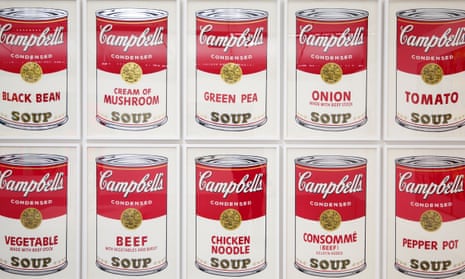The iconic US soup manufacturer, Campbell’s, has said that it will stop using Bisphenol-A (BPA) in cans by mid-2017, after the hormone-mimicking chemical was found in all 15 of its cans tested in a US survey.
Two-thirds of the nearly 200 food containers analysed by the Ecology Centre in Michigan were found to contain BPA, with 70% of Del Monte tins testing positive and other companies’ tins turning in similar results. The endocrine disruptor was also found in tests of all three ‘Carnation’ tins by Nestle.
Bart Staes, a Green MEP, said: “Two-thirds of cans is really a shocking figure and absolutely not acceptable. We have to remove those cans from the food chain and I think an inquiry is needed because I can imagine that this is not only a Campbell’s problem.”
Contact with BPA has been linked to breast and prostate cancer, asthma, obesity and diabetes, but the debate about tolerable levels of exposure is ongoing.
The EU has banned baby bottles containing BPA and France has outlawed the chemical altogether, proposing a similar prohibition across Europe.
Staes called for the European commission’s food and veterinary office to urgently establish whether cans containing endocrine disruptors were being imported into the EU.
He said: “We have to use the tools we have to investigate imports, alert member states and ask the food and veterinary office to control all imports of those kinds of foods to the EU, which they are entitled to do”.
The study was commissioned by the US Breast Cancer Fund and backed by other NGOs such as Canada’s Environmental Defence.
The chemical was detected in soup can linings, from where it can potentially migrate into food. However, the study did not measure the quantities of BPA present in the polymer linings.
Soup and gravy cans were the most likely tins found to contain BPA, while cans of corn and peas were the least. Milk cans were also very likely to be made with the chemical.
Bev Thorpe, one of the report’s authors said that Campbell’s acted within days of receiving an advance copy of the study and reports indicate that Del Monte are doing the same.
“Our priority throughout this transition has been, and will continue to be, food safety,” said Mike Mulshine, packaging manager at Campbell’s. “We have tested and conducted trials with hundreds of alternatives to BPA lining and believe the acrylic and polyester options will ensure our food remains safe, affordable and tastes great.”
A spokeswoman for Nestle said: “Despite BPA being safe and posing no health risk to consumers, we have made a public commitment to remove it from our packaging materials. We have already eliminated BPA from our packaging for infant foods and are working towards completing the full transition of our product portfolio to non-BPA food contact packaging, where suitable safe alternatives exist.
In March, a Netherlands’ health ministry report recommended reducing exposure to BPA wherever possible, particularly for small children and women who are pregnant or breast-feeding.
However regulating the substance at the EU level has proved contentious. The European Chemicals Agency risks assessment board classified BPA as toxic for sexual reproduction – affecting both fertility and sexual function – but the last European Food and Safety Authority assessment found “no health concern for any age group” exposed to BPA.
Efsa is due to revise that judgement by the end of the 2016 but after several similar re-analyses in the last decade, campaigners warned of what they called “paralysis by analysis”.
“BPA is one of the most studied chemicals out there and PCBs were banned on less evidence,” said Lisette van Vliet, a senior advisor to the Health and Environmental Alliance. “It is outrageous, given what we know about the harm it can cause, that we are not seeing swift obligatory action to minimise exposure to BPA.”
Limiting overall BPA exposure is made more difficult by the fact that it is found in so many everyday products: toys, medical devices, cash register receipts, paints and coatings.
Some commonly-used substitutes for BPA are also far from perfect. More than a third of nationwide brands surveyed by the Ecology Centre used PVC compounds made from vinyl chloride, a known carcinogen.
The European commission is expected to finally publish criteria for identifying endocrine disruptors this summer, after several delays that have been attributed to industry pressure.
Note: Statements from Campbell’s and Nestle were received after first publication of this story and then added.

Comments (…)
Sign in or create your Guardian account to join the discussion